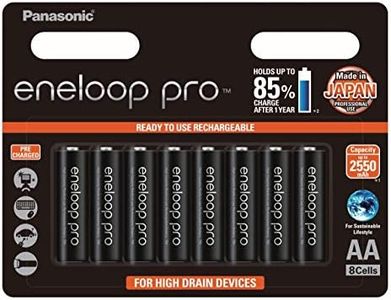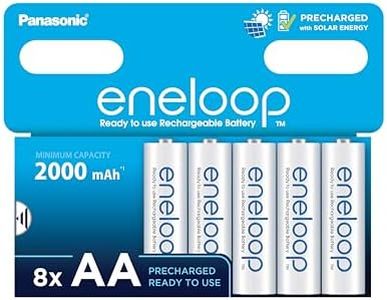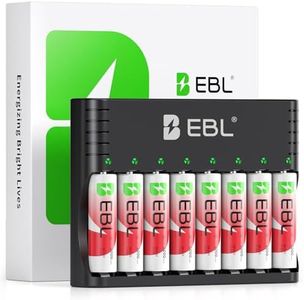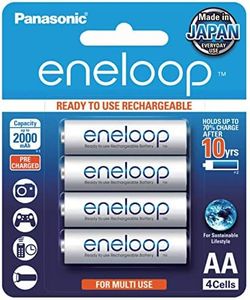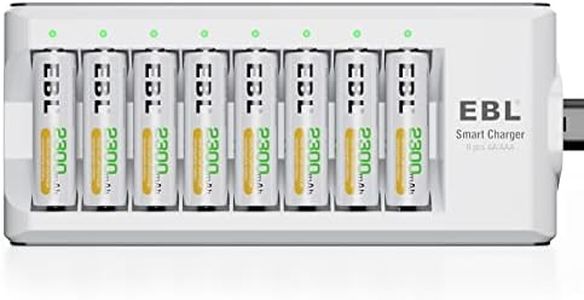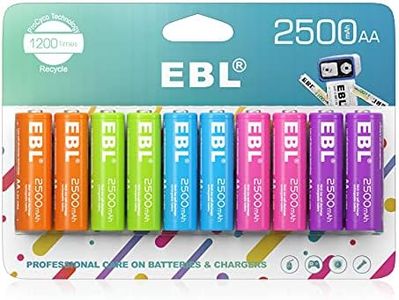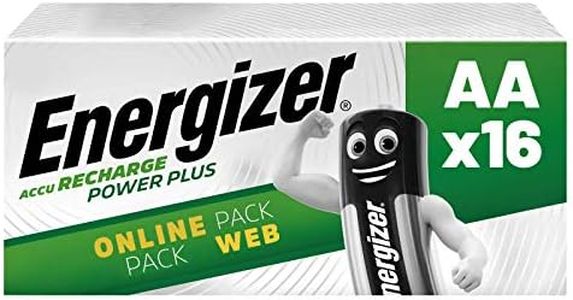We Use CookiesWe use cookies to enhance the security, performance,
functionality and for analytical and promotional activities. By continuing to browse this site you
are agreeing to our privacy policy
10 Best Aa Rechargeable Batteries
From leading brands and best sellers available on the web.Buying Guide for the Best Aa Rechargeable Batteries
When it comes to picking AA rechargeable batteries, it's important to understand that they are not all the same. The right rechargeable AA battery can provide consistent power for your devices, help you save money over time, and reduce waste compared to single-use batteries. Choosing the best fit for your needs involves looking at a few key specifications. By understanding what these specs mean and how they relate to how you use your devices, you can make a smart and satisfying choice.Battery Capacity (mAh)Battery capacity, measured in milliampere-hours (mAh), tells you how much energy a battery can store. A higher mAh means the battery can power a device for a longer time before needing a recharge. Low-capacity batteries (around 1300-1600mAh) are lighter and may charge quicker, making them ideal for devices that don’t use a lot of power, like TV remotes or clocks. Medium-capacity batteries (1800-2200mAh) offer a good balance and work well for toys, wireless mice, and similar gadgets. High-capacity batteries (2300-2500mAh and above) are great for power-hungry items like digital cameras or portable gaming devices, but they might take longer to recharge and can be slightly heavier. Your device’s energy demands should guide which capacity you choose—pick higher capacity for devices used frequently or for longer sessions.
Battery Chemistry (NiMH vs. NiCd vs. newer types)The chemistry of a battery affects its performance, lifespan, and environmental impact. The most common types for AA rechargeables are Nickel-Metal Hydride (NiMH) and the older Nickel-Cadmium (NiCd), though there are some newer chemistries as well. NiMH batteries have largely replaced NiCd because they offer higher capacity and don’t have 'memory effect,' which was a problem with NiCd batteries that caused them to lose capacity if recharged before fully drained. NiMH is the best choice for most people due to its reliability and compatibility with modern devices. If you run into NiCd batteries, these are best used for specific equipment that requires them, but for general use, stick to NiMH. The newer chemistries offer improvements in specific areas but are less common and may need special chargers.
Recharge Cycles (Lifespan)Recharge cycles tell you how many times a battery can be fully recharged before it starts to lose performance. Typical AA rechargeable batteries are rated anywhere from around 500 to over 2000 cycles. Fewer cycles may be fine if you only use the batteries occasionally, while higher cycle batteries are better for things like daily-use gadgets or if you want to use the same set for many years. If you expect to recharge batteries frequently, look for products with higher cycle ratings, but for less frequent use, simply pick a reliable brand and focus on other specs.
Self-Discharge Rate (Retention of Charge)Self-discharge rate indicates how quickly a fully charged battery loses its power while not in use. Some rechargeable AA batteries can lose charge more quickly than others—standard NiMH batteries might lose a lot of power just sitting in a drawer for a few months. 'Low self-discharge' batteries are designed to hold their charge for longer—up to a year or more—which is perfect for devices you don’t use every day, like emergency flashlights or some remote controls. If you plan to leave batteries unused for weeks or months, look for 'low self-discharge' on the packaging.
Charging CompatibilityNot all AA rechargeable batteries work with every charger, especially if you use some advanced chemistries or extra high-capacity batteries. Standard NiMH batteries can be recharged in almost any modern AA charger, but if you try to use a fast charger or a charger meant for a different chemistry, it could shorten battery life or even be unsafe. Always check that the charger’s specifications match your batteries'. If you already have a charger, make sure your new batteries match; if not, consider buying a charger that is recommended by the battery manufacturer for the best performance and safety.

